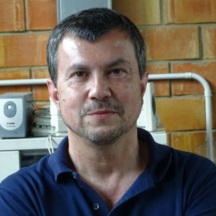Agro-Industrial Residues Treatment, Recycling, and Reuse
A special issue of Sustainability (ISSN 2071-1050). This special issue belongs to the section "Resources and Sustainable Utilization".
Deadline for manuscript submissions: closed (30 June 2023) | Viewed by 9342
Special Issue Editors
Interests: municipal and industrial wastewater treatment using biologically mediated processes and technologies; resource recovery from organic residues of different origin through biological and bio-electrochemical processes; recovery of secondary and critical raw materials from mine waste; remediation of multi-contaminated grounwater
Interests: solid waste treatment; remediation of contaminated soils; wastewater treatment; particularly on the following research topics: CO2 mineral Sequestration through accelerated carbonation of alkaline residues; hydrothermal carbonization of organic waste; remediation of heavy metals-contaminated soils by phytoremediation or electrokinesis; solid waste mechanical-biological pretreatment, anaerobic digestion of solid waste; optimization and control of biological wastewater treatment plants; biological treatment of wastewater containing bio-recalcitrant organic substances, advanced process for nitrogen removal
Interests: waste management; resource recovery from waste and by-products through integrated processes; remediation of soils and sediments
Special Issues, Collections and Topics in MDPI journals
Interests: solid waste management and treatment; recovery of products, compounds and energy from by-products and residues; remediation of contaminated sites and environmental matrices
Special Issue Information
Dear Colleagues,
As renowned experts in the field, you are certainly aware that growing food and biomass production has led to a significant increase in the exploitation of natural resources. According to the Food and Agriculture Organization of the United Nations (FAO), agriculture alone accounts for about 72% of total freshwater withdrawal, 30% of the world’s available energy is currently consumed by the agri-food system, and 70% of total nitrogen demand will be used for the synthesis of fertilisers in 2022. In addition, the agro-industrial sector is responsible for significant GHG emissions (30% of total global anthropogenic emissions in 2019), the worsening of soil and freshwater quality due to uncontrolled nutrients release, and pollution related to emerging contaminants such as pesticides and antibiotics.
Within this framework, this Special Issue aims to provide an up-to-date set of information on recent advances in the treatment, recycling and reuse of agro-industrial residues. We therefore encourage the submission of original research articles and reviews concerning (but not limited to): agro-industrial residue characterisation and sustainable management; the recovery of energy and nutrients, and the synthesis of value-added chemicals from agro-industrial residues (e.g., livestock manure, food processing effluents, dairy by-products, etc.) through biologically mediated technologies; the biological treatment and reuse of agro-industrial wastewater; the economic and environmental assessment of energy/resource recovery from agro-industrial residues; and discussions of case studies.
Your recent findings on the above-mentioned topics will play an active role in fostering the transition of the agro-industrial sector toward a circular economy-based approach, thus making it more competitive and sustainable.
We look forward to receiving your contributions.
Dr. Stefano Milia
Dr. Giovanna Cappai
Dr. Giorgia De Gioannis
Prof. Dr. Aldo Muntoni
Guest Editors
Manuscript Submission Information
Manuscripts should be submitted online at www.mdpi.com by registering and logging in to this website. Once you are registered, click here to go to the submission form. Manuscripts can be submitted until the deadline. All submissions that pass pre-check are peer-reviewed. Accepted papers will be published continuously in the journal (as soon as accepted) and will be listed together on the special issue website. Research articles, review articles as well as short communications are invited. For planned papers, a title and short abstract (about 100 words) can be sent to the Editorial Office for announcement on this website.
Submitted manuscripts should not have been published previously, nor be under consideration for publication elsewhere (except conference proceedings papers). All manuscripts are thoroughly refereed through a single-blind peer-review process. A guide for authors and other relevant information for submission of manuscripts is available on the Instructions for Authors page. Sustainability is an international peer-reviewed open access semimonthly journal published by MDPI.
Please visit the Instructions for Authors page before submitting a manuscript. The Article Processing Charge (APC) for publication in this open access journal is 2400 CHF (Swiss Francs). Submitted papers should be well formatted and use good English. Authors may use MDPI's English editing service prior to publication or during author revisions.
Keywords
- circular economy
- agro-industry
- energy recovery
- nutrients
- synthesis
- biological processes








